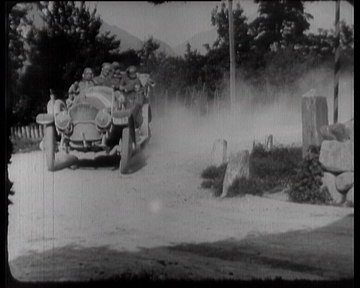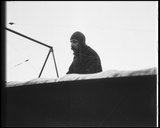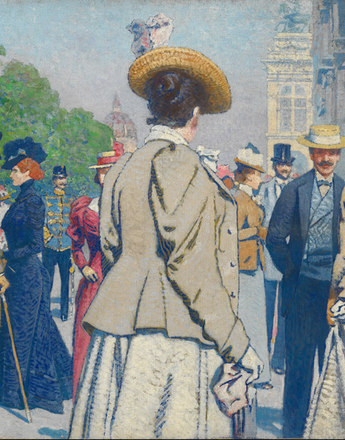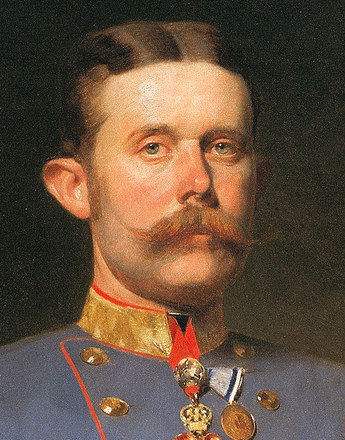The thrill of speed in film: heroes of the road and air
Automobile drivers, members of the wealthy upper classes, were seen increasingly on the roads. While they drew admiration, the conquerors of the air were celebrated as true heroes. Film-makers were quickly on the scene to give the film-going public a taste of this new luxury mobile leisure.
‘Motoring, it must be admitted, is a disease, a disease of the mind. The disease has a pretty name: speed.’ In these few words in his travelogue La 628 E-8, his car registration number, the journalist and writer Octave Mirbeau characterized the desire for more speed and constant movement as a ‘disease’.
Towards the end of the nineteenth century this ‘malaise’ had also gripped Austria-Hungary. The first automobile, a Ben Phaeton, appeared on the streets of Vienna in November 1892. By 1897 there were fifteen automobile owners in the Vienna area and at least thirty-five in the Habsburg Monarchy as a whole. In 1898 automobiles were allowed in the centre of Vienna. At the same time third-party insurance for automobiles entered into force.
In 1907 there were around 1,600 automobiles in present-day Austria, rising to 5,000 by 1911. Motorcycles and ‘petrol-driven hackneys’ were reserved initially for the upper classes and pioneers of technology. An automobile cost half as much as a villa with garden. Automobile enthusiasts were therefore often aristocrats and industrialists. They included heir to the throne Franz Ferdinand, Archduke Franz Salvator, Archduke Karl Franz Josef and Prince Elias von Parma in Trento. Entrants in the International Alpine Rally in 1912 were thus also for the most part members of the aristocracy. The ever-present spectators underlined the admiration of these fashionable aristocratic ‘knights of the road’ (The International Alpine Rally 1912, A/F 1912).
All over the world aviators were celebrated as intrepid ‘heroes of the air’, and their achievements, adventures and records were reported in the press and recorded on film. At the end of 1908, for example, the Daily Mail offered a prize of £1,000 for the first flight from England to France. Hubert Latham attempted it on 19 July 1909 but had to make an emergency landing in the English Channel because of engine damage. A few days later the Frenchman Louis Blériot, who had crashed and burnt his arm just a month earlier, managed to cross the Channel. He was cheered euphorically, and the film of his flight caused a sensation wherever it was shown (Blériot’s Flight in an Aeroplane over the Straits of Dover, F 1909).
Austrian aviation dates back to 11 August 1882, when Victor Silberer flew over Vienna in his balloon Vindobona. It gave rise to a growing interest in aviation. The first aerodrome in Austria-Hungary was built in Wiener Neustadt, and the first field pilots trained there from 1911. In 1913 the army rented the entire aerodrome, and in 1915 Österreichische Flugzeugfabrik A.G. was founded.
Translation: Nick Somers
Achenbach, Michael (Red.): Luftfahrt. Motorflug. Edition Historischer Verkehr, Wien 2003
Blom, Philipp: Der taumelnde Kontinent. Europa 1900–1914, München 2009
Sandgruber, Roman: Ökonomie und Politik. Österreichische Wirtschaftsgeschichte vom Mittelalter bis zur Gegenwart, Wien 1995
-
Chapters
- Cinematic fascination: the machine in war propaganda
- Mobility in film: conquering new spaces
- The thrill of speed in film: heroes of the road and air
- Voyaging and travelling: tourism and tourism films
- Capturing the unusual: the Vienna Prater
- Movement in films – sport, gymnastics and physical culture
- Power and the public: political movements in historical films






